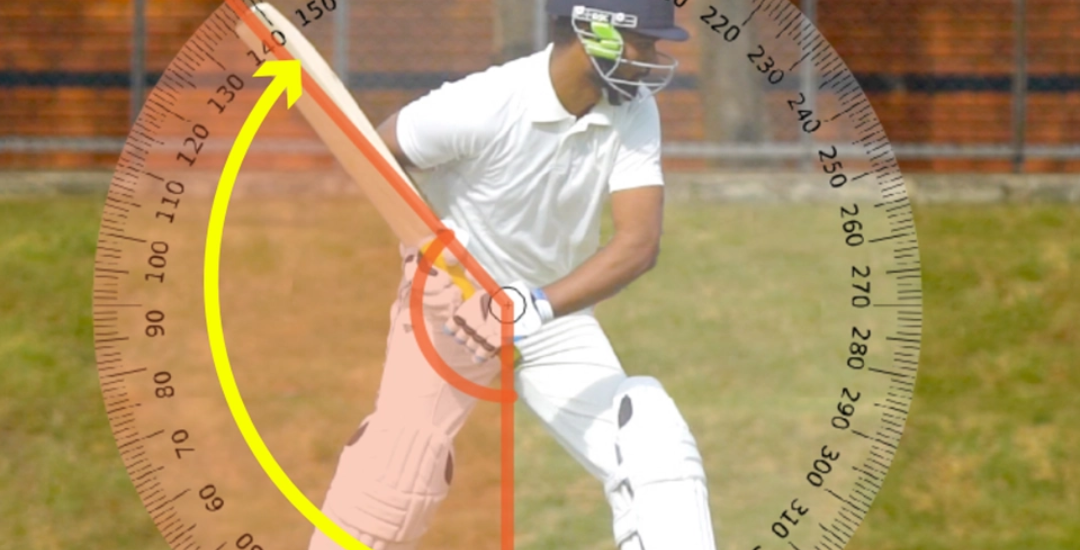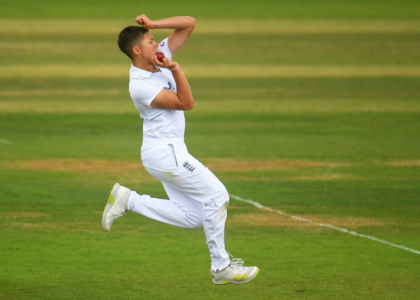In cricket, a solid and well-balanced batting stance is the foundation for effective shot-making. It influences your ability to generate power, control your shots, and maintain stability while facing any delivery. A perfect stance gives you the confidence to face fast bowlers, spinners, and even unpredictable swing deliveries. This article explores the key aspects of refining your batting stance for maximum power, helping you improve your performance at the crease.
1. Importance of a Good Batting Stance
The batting stance is the starting point of every shot you play in cricket. It sets the tone for how well you can respond to different types of deliveries. A good stance offers the following advantages:
- Balance and Stability: A stable stance helps you maintain balance while playing shots, allowing for better shot selection and control.
- Power Generation: A correct stance ensures that your body weight is distributed efficiently, enabling you to generate more power when hitting the ball.
- Quick Reflexes: A well-prepared stance helps you stay agile, allowing for faster reactions to pace and spin.
If your stance is unbalanced or inconsistent, it can affect your ability to hit the ball cleanly, lead to mistimed shots, and reduce your overall effectiveness as a batsman.
2. Finding the Right Stance
Every batsman has a unique stance, but the fundamentals remain the same. The following elements are crucial for building a powerful and balanced stance:
- Foot Position: Place your feet shoulder-width apart to give yourself a strong base. This width provides stability and balance, allowing you to transfer your body weight effectively when playing shots. Your front foot should be aligned slightly toward the bowler, while your back foot should remain parallel to the crease.
- Knee Flexion: Slightly bend your knees to maintain flexibility and readiness. This slight bend helps in quick movement, both forward and backward, allowing you to adjust to the ball’s length. A rigid stance will limit your movement and make it difficult to react quickly.
- Head Position: Your head should be still and positioned over your front knee. This keeps your center of gravity low and helps you stay balanced while playing shots. A still head also enables you to watch the ball closely from the bowler’s hand to the bat.
- Hands and Bat Position: Your hands should grip the bat firmly but not too tightly, with your top hand controlling the bat’s face. Keep the bat close to your body, resting on your back shoulder, ready to come down straight. Your bottom hand should be used for guidance and control, not for power.
- Eye Level: Keep your eyes level with the horizon. This enhances your ability to judge the line and length of the ball more accurately and helps in timing your shots better.
3. Body Weight Distribution
Proper weight distribution is key to generating power in your shots. In cricket, weight transfer refers to how your body shifts from one foot to the other when playing a shot. The ability to move your body weight efficiently determines your shot’s strength and effectiveness.
- Forward Weight Transfer: For shots played on the front foot, such as cover drives or straight drives, your weight should transfer to the front foot. As you step toward the ball, your head and shoulders should move forward, allowing you to hit the ball with maximum power.
- Back Foot Play: When playing shots off the back foot, such as the cut or pull shot, your weight should shift to your back foot. This allows you to stay balanced while generating power from your core and legs to execute the shot.
Improper weight distribution can lead to mistimed shots, a lack of power, and missed scoring opportunities. Focus on getting your weight transfer right to make solid, powerful contact with the ball.
4. Adjusting Your Stance for Different Deliveries
While having a standard stance is important, you also need to adapt it based on the bowler you’re facing and the type of delivery:
- Facing Fast Bowlers: When facing fast bowlers, you may want to keep your stance slightly more open (feet pointed toward mid-on) to give yourself a clear view of the ball. Keep your knees slightly bent to help with quick movements and prepare for short-pitched deliveries.
- Facing Spin Bowlers: When facing spin bowlers, you can close your stance slightly and position your front foot closer to off-stump. This helps you play more confidently against turning deliveries and ensures you can get to the pitch of the ball more easily.
- Dealing with Swing: Against swing bowlers, keep your head still and your stance slightly narrower. This helps in staying balanced when the ball moves in the air, allowing you to adjust quickly to swing deliveries without losing your shape.
5. Building Power Through Your Stance
To generate maximum power, your stance should allow for fluid, coordinated movements between your upper and lower body. Here’s how you can build more power into your stance:
- Use Your Core and Legs: Power in cricket comes not just from your arms but from your entire body, particularly your core and legs. Strong leg muscles help with weight transfer and stability, while a strong core helps in rotating your body to generate more power in your shots.
- Bat Swing Mechanics: A powerful stance must allow for a smooth and effective bat swing. Start your downswing with the top hand, bringing the bat down in a straight line. Your bottom hand should act as a guide, ensuring the bat face remains aligned with the ball. Avoid an excessive backlift or over-rotation, as this can lead to loss of control.
- Footwork and Timing: Power is generated through proper footwork and timing. Always ensure that you are in the correct position before playing your shot. Whether stepping forward for a drive or shifting back for a cut, the key to power is synchronizing your footwork with your bat swing.
6. Common Mistakes in Batting Stance
Here are some common mistakes that can limit your power and efficiency:
- Over-Gripping the Bat: Holding the bat too tightly can reduce flexibility and control. Keep a relaxed grip to allow a free-flowing swing.
- Leaning Back: Leaning back while batting can result in poor weight transfer and mistimed shots. Ensure that your head is always forward over your front knee for shots played on the front foot.
- Too Wide or Too Narrow Stance: A stance that is too wide or too narrow can throw off your balance, affecting your ability to generate power. Keep your feet shoulder-width apart to maintain stability and agility.
- Jumping or Falling Over: Some players tend to jump or lose balance while playing shots, especially against fast bowlers. This happens when weight transfer is not controlled. Stay grounded and maintain a steady base for consistent shot-making.
7. Practicing Your Stance
Perfecting your batting stance takes consistent practice. Here are some drills to help you refine your stance:
- Shadow Batting: Practice your stance and footwork without the ball. Focus on your posture, weight distribution, and bat swing to build muscle memory.
- Net Sessions: Spend time in the nets facing a variety of bowlers. This will help you get comfortable with adjusting your stance based on the type of delivery and bowler you’re facing.
- Video Analysis: Record your net sessions and review your stance. Look for areas where you might be off-balance or mistiming your shots, and work on improving those areas.
Conclusion
A perfect batting stance is the foundation for consistent and powerful shot-making in cricket. By focusing on balance, weight distribution, footwork, and adapting to different bowlers, you can build a stance that not only generates power but also improves your control and confidence at the crease. Keep practicing, refining, and analyzing your stance to take your batting to the next level and dominate the opposition bowlers.
This 1000-word SEO content is designed to improve searchability by addressing key elements of batting stance improvement.




